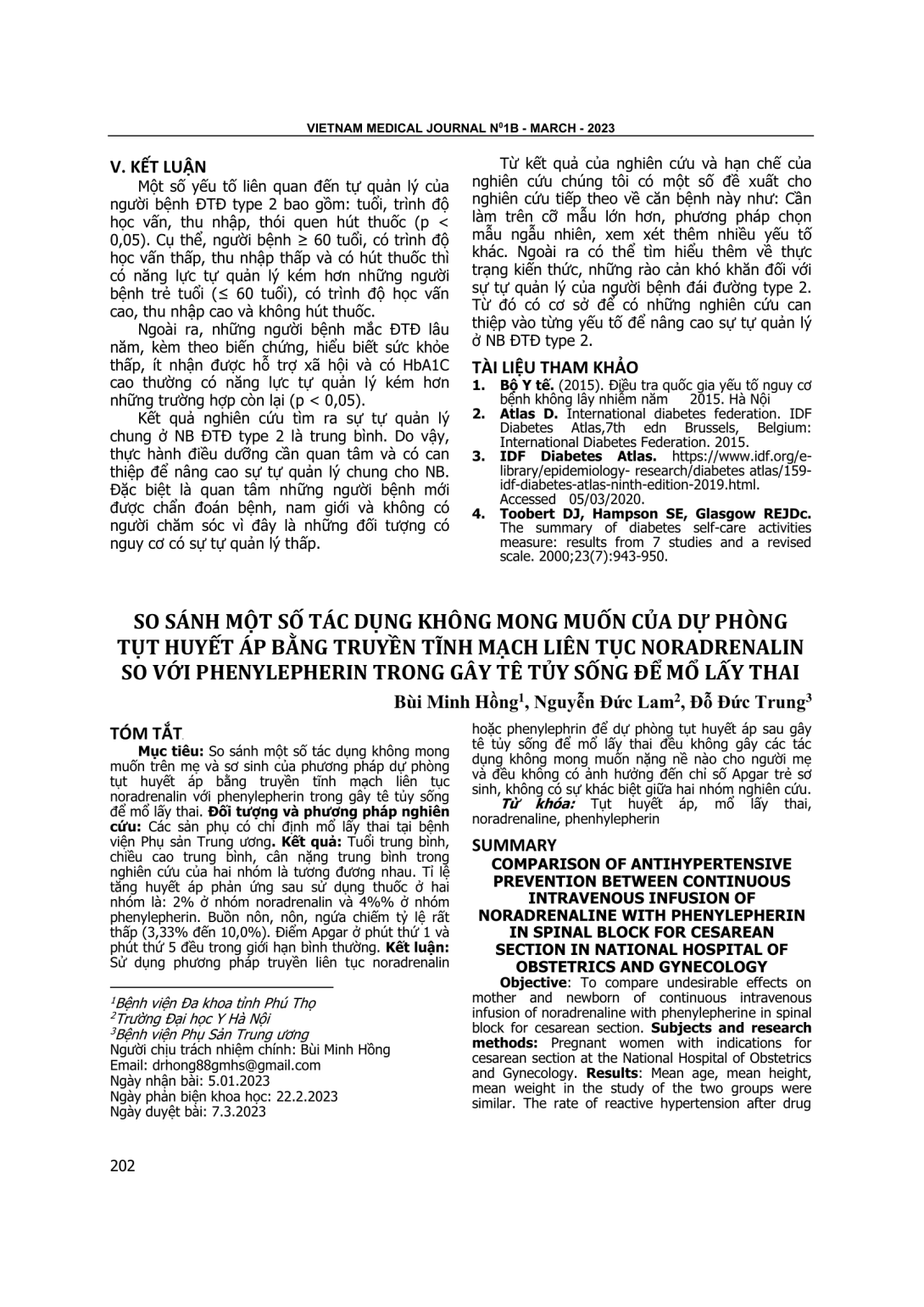
So sánh một số tác dụng không mong muốn trên mẹ và sơ sinh của phương pháp dự phòng tụt huyết áp bằng truyền tĩnh mạch liên tục noradrenalin với phenylepherin trong gây tê tủy sống để mổ lấy thai. Đối tượng và phương pháp nghiên cứu: Các sản phụ có chỉ định mổ lấy thai tại bệnh viện Phụ sản Trung ương. Kết quả: Tuổi trung bình, chiều cao trung bình, cân nặng trung bình trong nghiên cứu của hai nhóm là tương đương nhau. Tỉ lệ tăng huyết áp phản ứng sau sử dụng thuốc ở hai nhóm là: 2% ở nhóm noradrenalin và 4%% ở nhóm phenylepherin. Buồn nôn, nôn, ngứa chiếm tỷ lệ rất thấp (3,33% đến 10,0%). Điểm Apgar ở phút thứ 1 và phút thứ 5 đều trong giới hạn bình thường. Kết luận: Sử dụng phương pháp truyền liên tục noradrenalin hoặc phenylephrin để dự phòng tụt huyết áp sau gây tê tủy sống để mổ lấy thai đều không gây các tác dụng không mong muốn nặng nề nào cho người mẹ và đều không có ảnh hưởng đến chỉ số Apgar trẻ sơ sinh, không có sự khác biệt giữa hai nhóm nghiên cứu.
To compare undesirable effects on mother and newborn of continuous intravenous infusion of noradrenaline with phenylepherine in spinal block for cesarean section. Subjects and research methods: Pregnant women with indications for cesarean section at the National Hospital of Obstetrics and Gynecology. Results: Mean age, mean height, mean weight in the study of the two groups were similar. The rate of reactive hypertension after drug use in two groups was: 2% in the noradrenaline group and 4%% in the phenylepherin group. Nausea, vomiting, itching accounted for a very low proportion (3.33% to 10.0%). Apgar scores at 1 and 5 minutes both show that the baby's condition was stable post-delivery. Conclusion: Using the method of continuous infusion of noradrenaline or phenylephrine to prevent hypotension after spinal anesthesia for cesarean section did not cause any serious adverse effects on the mother and no effect on the Apgar score of the infant, there was also no difference between the two study groups.
- Đăng nhập để gửi ý kiến
